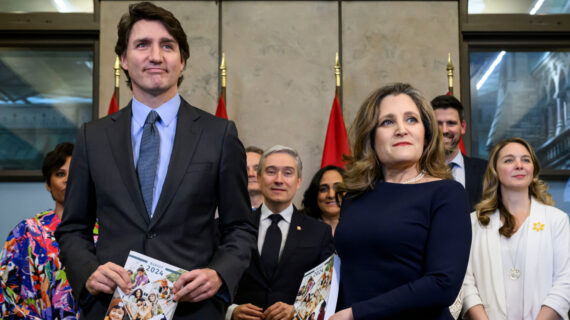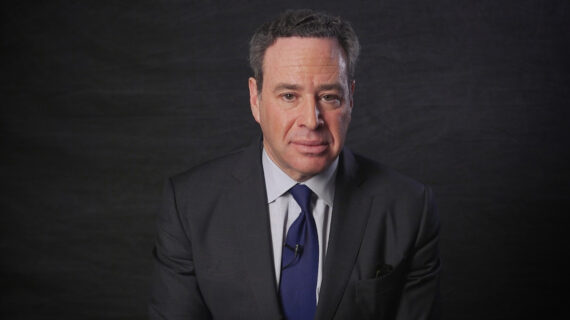As we move into 2023, it is worth looking at the past year not as a standalone point in time but as part of an era of the 21st century that future historians will likely denote as starting with the election of Donald Trump in 2016. Such convenient breakpoints are of course simply for the convenience of our human need to see beginnings and ends in history. History, ultimately, is not a series of well-labelled, watertight chronological compartments but is really a set of interconnected rivers and lakes flowing along in a general direction. It takes a while to realize when one watershed ends and another begins.
The simplest of these chronological separations can be seen as a series of periods starting from the dawn of the industrial era. For example, the “long” 19th century from the French Revolution in 1789 to the start of the First World War in 1914. Or perhaps long and short versions of the twentieth century dating either from the start of the First Great Globalization in approximately 1870 to the fall of the Berlin Wall in 1989, or from the First World War to the Fall of the Berlin Wall. One might even denote the 19th-century era as going from 1789 to 1945, with the interwar period and both world wars the final spasms of the 19th-century world order created in the wake of the 1815 Congress of Vienna.
This long 19th century would then be divided into three phases—early industrialization to approximately 1870, the second industrialization and trade globalization of 1870 to 1914, and the falling apart of this world order from 1914 to 1945. This would make the 20th-century world order of the Cold War and the Pax Americana exceedingly short—from 1945 to 1989.
The one consistency in all of these albeit artificial demarcations is the Fall of the Berlin Wall and the collapse of the Soviet Union as an endpoint. It marks the start of a quarter century of remarkable economic change and development that can be termed the Second Great Globalization. From 1990 to 2016, the world witnessed the reintegration of Eastern Europe and Russia into world market economies, the rise of China as the world liberal economic order welcomed it into its trade and production networks with the aspiration that democracy would soon follow, and finally the spread of free trade and global supply chains, not the least of which affected Canada via the FTA and later on NAFTA. It was an era of tremendous prosperity and economic growth with an elastic aggregate global supply curve dependent on the tremendous growth of China that fueled low prices and supported low-interest rates and an age of cheap borrowing.
We will in retrospect look back on the quarter century from 1990 to 2015 as a veritable golden age, similar to how the post-1914 world eventually looked at the era from 1870 to 1913. Of course, the past never really has golden ages, and there were always problems during the most prosperous of periods. Nevertheless, prosperity mutes problems and they can fester, thus laying seeds for later turmoil and change. The era of the First Great Globalization from 1870 to 1913 was accompanied by rapid economic and social change along with soaring economic inequality. And the economic integration that accompanied it conflicted with the international institutional structures of the time, eventually leading to war. The period from 1990 to 2015 was also accompanied by rising economic inequality, asset bubbles, and low wage growth for a substantial proportion of labour forces in industrial countries. Needless to say, the growing dissatisfaction laid the seeds for populism, and, as heralded by the election of Donald Trump, had been underway for a number of years prior to 2016.
The period since 2016 has been another period of changing historical flows and the ultimate direction remains to be seen. The reaction to the Second Great Globalization was already in progress as the world was coming to realize that greater economic prosperity in more autocratic and illiberal regimes was not going to be accompanied by more democracy. The COVID-19 pandemic disrupted integrated global supply chains that were already being regarded with caution given the growing wariness of the developed world’s economic dependency on countries that did not necessarily share developed country democratic values.

While the second decade of the 21st century seemed to suggest a world where the more democratic West and the United States were in decline given rising aspirations of a more autocratic and focused China and Russia, the future now seems to suggest otherwise.
The West has been seen as in decline at least since the days of Oswald Spengler, and yet, to borrow from Mark Twain, rumours of its demise are greatly exaggerated. So, here we are. It is Russia that has engaged in military overreach by invading Ukraine. It is China that is facing both demographic decline with its rapidly aging population, as well as pushback by its citizens against the long-term autocratic management of the COVID-19 pandemic.
Oddly enough, the decadent, irresolute, and unfocused West appears to have dealt with COVID after all, managed to develop the better package of vaccines, is solving its energy security issues, and is now rapidly coming together in cooperative behaviour to push back against both Russian and Chinese government assertiveness. And yet there is danger here as Russia and China, like individuals, can act rashly when feeling insecure.
Still, who would have thought? In the wake of the Fall of the Berlin Wall, the West began embarking on an end-of-history sense of triumphalism that was misplaced. Similarly, Russia and China in the wake of their resilience after the 2008-09 Great Recession did the same. They viewed the future as theirs, with their more monolithic state-directed and managed economies seen as superior to those of the fractious United States and its allies. In the end, democratic governments combined with the institutions of a market economy can move very nimbly when the need and purpose arise. Much like a car engine on a bitter January morning, the resolve of the West sometimes needs a couple of attempted starts before engaging.
It would appear the future of the 21st century is not a foregone conclusion after all but has yet to be written.




